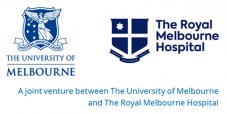02 Oct 2017
Establishing contemporary trends in Hepatitis B sero-epidemiology in an Indigenous population.
On 8 September 2017 PLoS One published a paper lead by Dr Jane Davies from the Department of Global and Tropical Health, Menzies School of Health Research, Darwin, and The Infectious Diseases Department, Royal Darwin Hospital, Darwin, Northern Territory, Australia. The article, titled Establishing contemporary trends in Hepatitis B sero-epidemiology in an Indigenous population examines all available HBV serology results obtained from the three main laboratories serving NT resident to determine Indigenous status and the most recent test results for each individual with the primary aim to obtain a contemporary estimate of HBsAg positivity for the NT by Indigenous status.
See the abstract below:
Abstract
Background
Indigenous populations globally are disproportionately affected by chronic hepatitis B virus (HBV) infection however contemporary sero-prevalence data are often absent. In the Indigenous population of the Northern Territory (NT) of Australia the unique C4 sub-genotype of HBV universally circulates. There are no studies of the sero-prevalence, nor the impact of the vaccination program (which has a serotype mismatch compared to C4), at a population-wide level.
Methods
We examined all available HBV serology results obtained from the three main laboratories serving NT residents between 1991 and 2011. Data were linked with a NT government database to determine Indigenous status and the most recent test results for each individual were extracted as a cross-sectional database including 88,112 unique individuals. The primary aim was to obtain a contemporary estimate of HBsAg positivity for the NT by Indigenous status.
Results
Based on all tests from 2007-2011 (35,633 individuals), hepatitis B surface antigen (HBsAg) positivity was 3·40% (95%CI 3·19-3·61), being higher in Indigenous (6·08%[5·65%-6·53%]) than non-Indigenous (1·56%[1·38%-1·76%]) Australians, p<0·0001. Birth cohort analysis showed HBsAg positivity fell over time for Indigenous people, with this decrease commencing prior to universal infant vaccination (which commenced in 1990), with an ongoing but slower rate of decline since 1990, (0·23% decrease per year versus 0·17%).
Conclusions
HBsAg positivity is high in the NT, particularly in the Indigenous population. HBsAg positivity has fallen over time but a substantial part of this decrease is due to factors other than the universal vaccination program.
For access to the full, open-access article: http://journals.plos.org/plosone/article?id=10.1371/journal.pone.0184082

